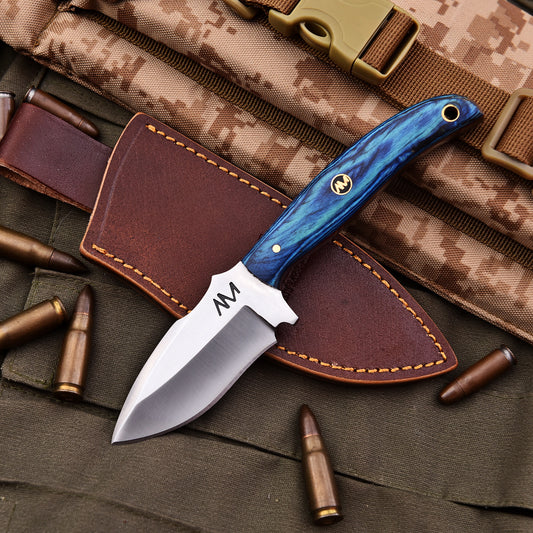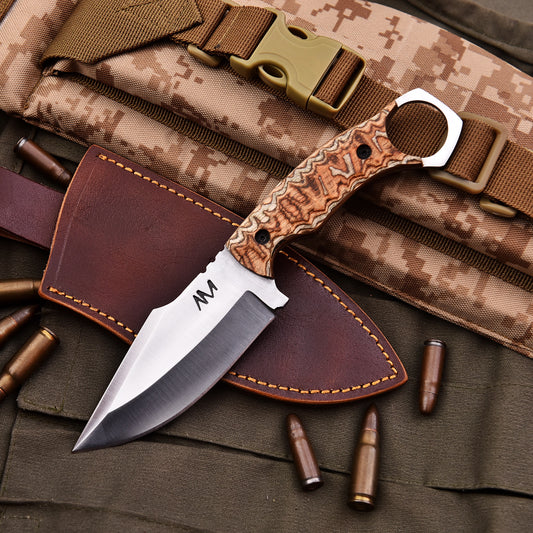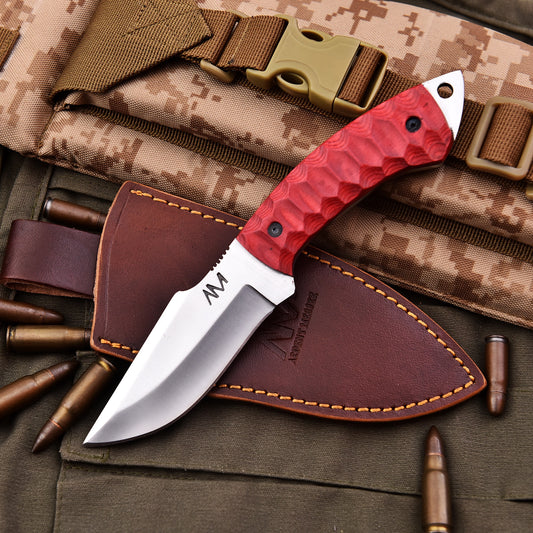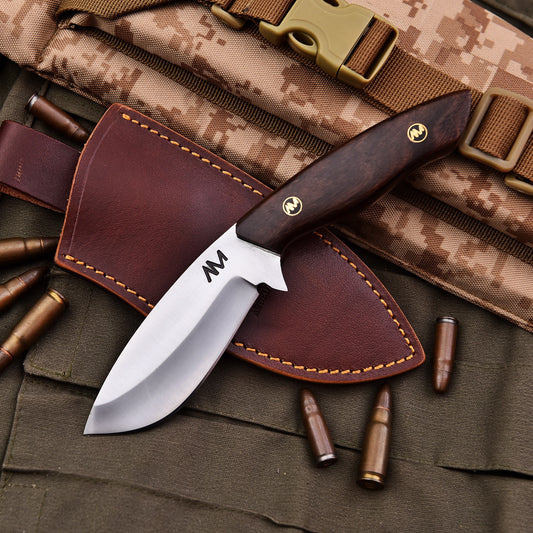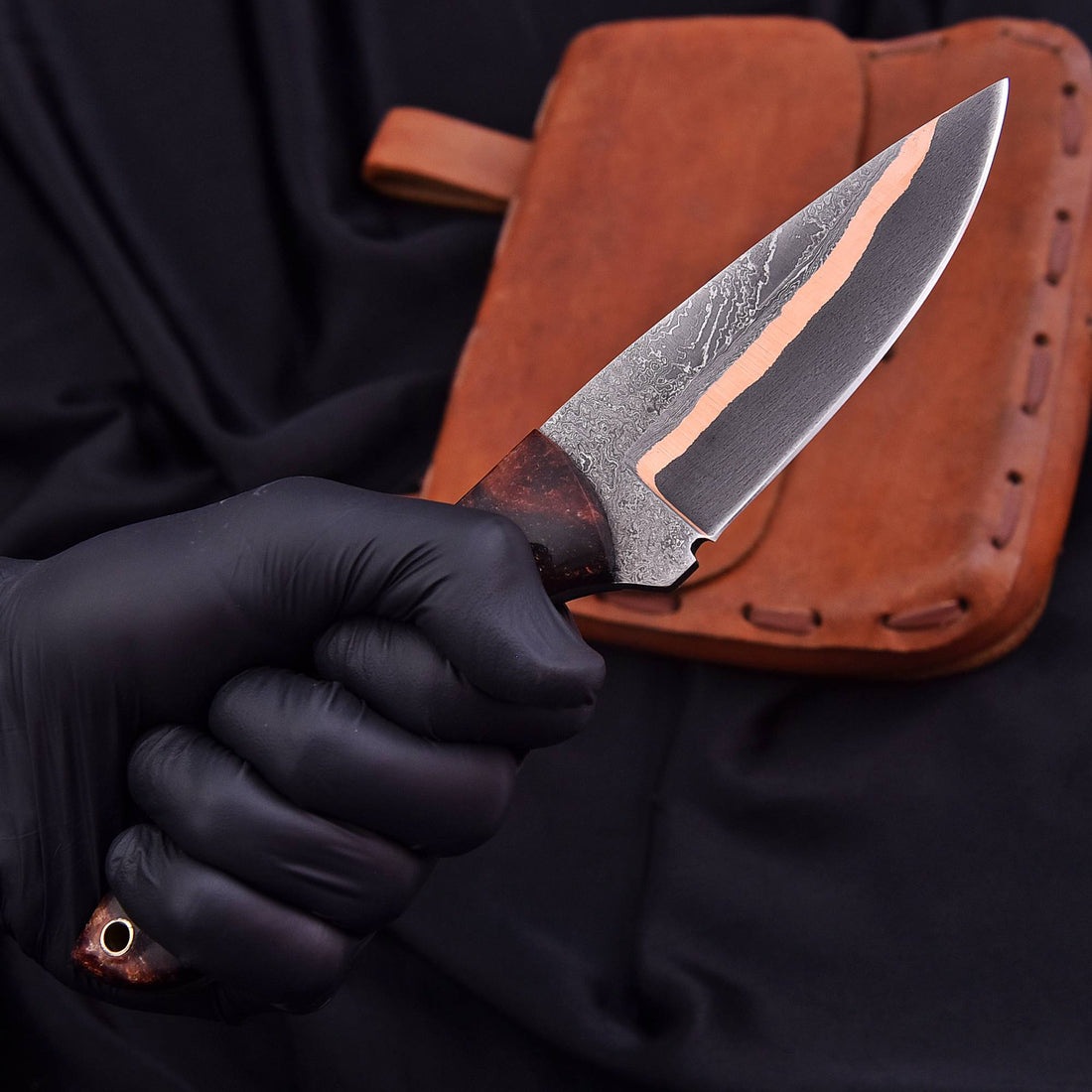
How to Maintain a Copper Damascus Knife: Full Care Guide
Share
How to Maintain Your Copper Damascus Knife (Step-by-Step)
Copper Damascus knives are more than tools — they’re pieces of functional art. Whether you own an AM Crimson, AM Vortex, or AM Monarch, these knives deserve proper care to preserve their sharpness, shine, and stunning layered patterns.
Let’s break down the exact steps to maintain your copper Damascus knife like a pro.
Step 1: Clean Immediately After Use
Why it matters:
Copper and Damascus steel are both reactive. Blood, acids (like lemon juice), salt, and even moisture can cause discoloration or corrosion if left on the blade.
What to do:
-
Rinse the blade under warm water (never hot).
-
Use a soft cloth or sponge with mild dish soap.
-
Avoid abrasive scrubbers — they can damage the etching and copper finish.
-
Dry thoroughly with a soft towel. Water spots = potential rust spots.
❌ Never put your Damascus knife in a dishwasher.
Step 2: Oil the Blade Regularly
Why it matters:
Oiling protects both copper and high-carbon steel from moisture, rust, and oxidation.
Best oils to use:
-
Food-safe mineral oil (if you use the knife on food)
-
Gun oil or WD-40 (if the knife is purely for display or outdoors)
How to apply:
-
Put a few drops on a clean cloth.
-
Wipe down the entire blade (both sides + spine).
-
Let it sit for 2–3 minutes, then wipe off the excess.
🗓 Do this after each use or at least once a week if it’s in storage.
Step 3: Handle Care (Especially for Resin & Wood)
If your knife has a resin, wenge wood, or rosewood handle (like AM Crimson or Copperveil):
-
Avoid soaking in water.
-
Wipe the handle clean with a damp cloth, not wet.
-
Use beeswax, Danish oil, or mineral oil once a month to nourish wood and prevent drying/cracking.
Step 4: Storage
Do:
-
Keep it in a dry place.
-
Store in a leather sheath with occasional ventilation.
-
Use silica gel packs in your knife drawer or safe.
Don’t:
-
Store a copper Damascus knife in a damp sheath long-term.
-
Leave it exposed in humid conditions.
🌡 Tip: In humid climates, regular oiling and ventilation are key.
Step 5: Sharpening the Right Way
Damascus edges can be razor-sharp — if maintained properly.
-
Use a ceramic honing rod regularly.
-
For major sharpening, use a whetstone (start with 1000 grit, finish with 3000+).
-
Maintain the original edge bevel (usually 20–22° per side).
Avoid pull-through sharpeners — they’re quick but damaging in the long run.
Bonus: What to Do If It Gets Stained or Discolored?
Light rust or patina?
-
Use a metal polish like Flitz or Maas on a soft cloth.
-
For natural patina lovers, leave it — it tells a story.
Heavy rust or green copper spots?
-
Mix baking soda + water to make a gentle paste.
-
Rub lightly with a soft cloth.
-
Rinse, dry, and oil immediately.
Final Words
Your copper Damascus knife isn’t just a tool — it’s a legacy piece. A well-maintained blade will last generations, and every scratch or patina adds character.
Treat it like you’d treat a classic car — clean it, protect it, and use it with pride.


